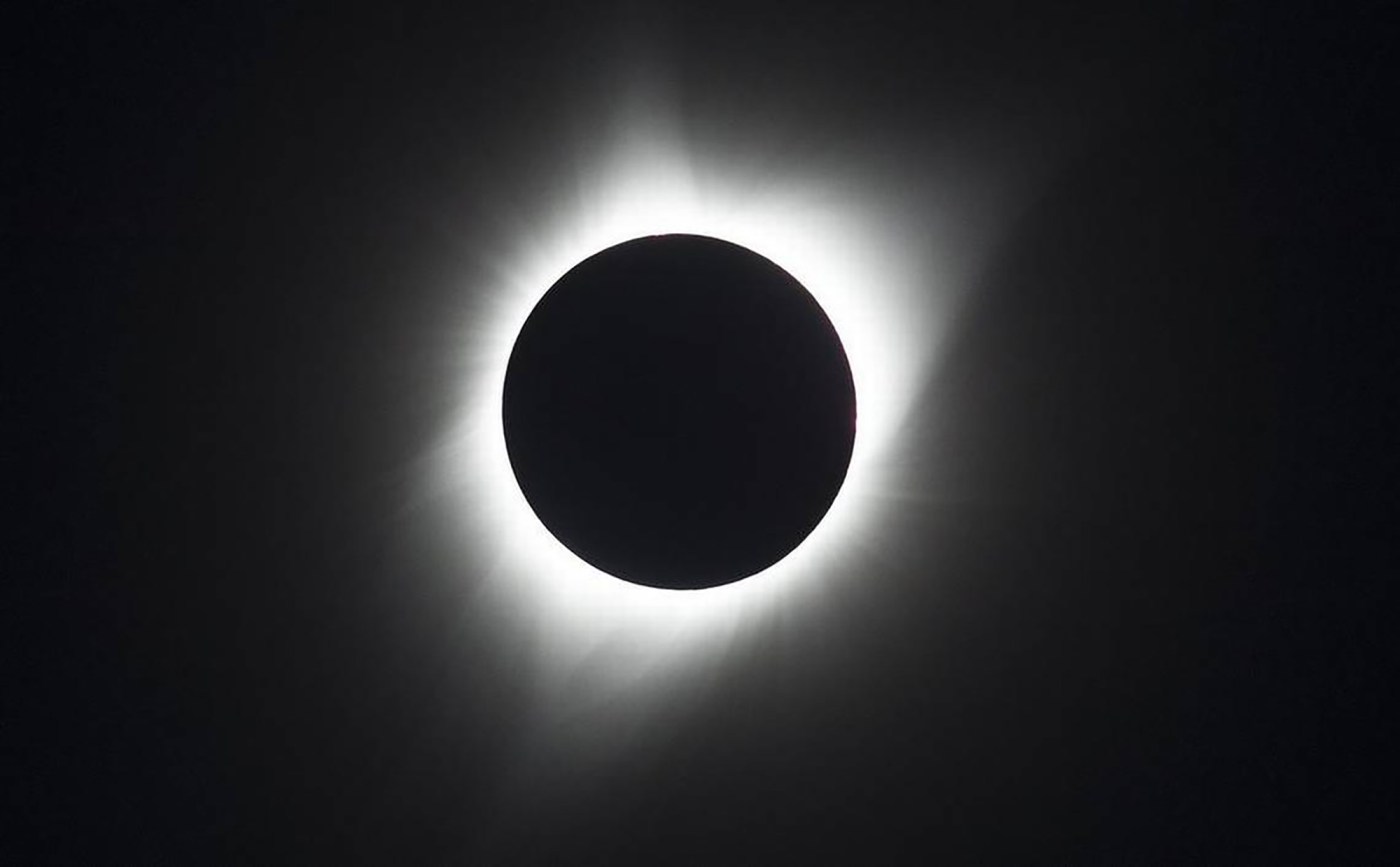
Skywatch: It’s solar eclipse time
Millions and millions of skywatchers, including yours truly have waited a long time for this! This Monday, April 8, much of North America and the United States will see at least a partial eclipse as the moon crosses in front of the sun. There’ll be a total eclipse along a nearly 125-wide path that’ll reach central Mexico in the late morning, cross into Texas in the early afternoon, and then head northeast into the Ohio River Valley, upstate New York, Quebec, Canada, and New England, finally exiting the continent through the Canadian Maritimes in the late afternoon.
What sets this eclipse apart is its unique combination of a wide totality path and an extended totality time. The path of totality, where the moon completely covers the sun, spans nearly 125 miles and will be visible for an impressive duration. In the U.S., the totality time ranges from over four minutes in Texas to over three minutes in Maine. This is due to the moon in its orbit being near its closest monthly approach to the Earth at the same time this eclipse is happening. This makes the moon’s disk appear larger in the sky than average, allowing it to cover the sun longer than usual.
(Mike Lynch)
In the Twin Cities we’ll see a deep partial eclipse that begins at 12:49 in the afternoon. At 2:02 at the mid-eclipse, almost 80% of the sun is covered. It will get noticeably darker. The eclipse ends at 3:14. Even with a nearly 80% partial eclipse, it’s still a far cry from the grand show of totality. The great news is that the closest the path of totality comes to Minnesota and Wisconsin is less than a day’s drive away in extreme southern Illinois and southeastern Missouri. If you’re hesitating about making the trip, remember that the next eclipse across such a large part of North America won’t happen again until 2045!
I hope to see it in Texas on April 8, but I’m being very flexible with my travel plans. It’s not too late to make your own travel plans, although forget about finding lodging in the band of totality. Just about every place has been booked for a long time. I advise driving somewhere along the edge of the totality band and staying there Sunday night. Then, very early on Monday, decide where there’s the best chance of clear skies and head that way into the totality band, as close to the middle of it as possible. Believe me, you’ll have lots of company. It also doesn’t matter if you’re in the city or countryside. Totality is excellent anywhere. Finding the right words to express the entire experience is pretty much impossible. It’s an absolutely stunning experience. As with any solar eclipse, do not stare at the sun without special approved eclipse glasses. You could damage your eye permanently. The only exception to this is during the few moments of totality
Total eclipses of the sun occur when the moon briefly covers the face of the sun in its monthly orbit around Earth. They occur about twice a year on average somewhere around the world when the moon is precisely in a line between the sun and a narrow swath on Earth. Since both the disks of the sun and moon disks are about the same size in the sky, this is a spectacular and rare show. On average, any one spot of the Earth experiences one every three or four centuries. The last time we saw a total solar eclipse in the Twin Cities was in 1954. I was born two years too late for that one.
Photographing a total or partial eclipse can be a lot of fun, but you must protect your eyes and camera. There’s a lot of great information on the internet on how to do this. Personally, though, I’m not all that interested in photographing the eclipse. There’s going to be a plethora of photos being taken by folks much more skilled than me and most of you. I can tell you from experience that I believe it’s most rewarding to witness it just with your protected, God-given eyes. Keep those eclipse glasses on! Also never, never, never view the partial eclipse with binoculars and telescopes, even if you’re wearing eclipse glasses. Blindness can set in almost immediately!
Make sure, though, don’t spend the entire time staring at the sun through your eclipse glasses, especially if you’re in the band of totality. Turn away from the sun and observe the landscape around you. Watch the diminishing daylight and changing sky color, avoiding the sun, of course. If you’re lucky to be in the totality band you may actually see the moon’s shadow migrating across the landscape. There’s no way to photograph that. You just have to see it! You’ll also feel the temperature dropping. With your solar eclipse glasses on, make sure you witness the very last bit of the sun’s disk being covered, producing what’s called the diamond ring effect as the sun’s light sneaks through mountain passes at the edge of the moon’s disk.
Only during totality is it safe to take off eclipse glasses and view with binoculars and telescopes. It’ll blow your mind! You may easily see flares and prominences churning and emanating from the sun’s violent surface. The sun’s corona and outer atmosphere will also be clearly visible. The most important thing to remember is to set a stopwatch with an alarm and STOP your telescope or binocular viewing at least 30 seconds before totality ends and put your eclipse glasses on again. You never want to view even a tiny sliver of the sun’s surface with a telescope or binoculars except during totality. You could easily damage your eyes or worse! Safety first! Also, take a few seconds here and there to check out the sky during totality. Bright stars and planets pop out, and the skies take on a weird twilight color all along the horizon.
(Mike Lynch)
If you can’t get hold of eclipse glasses, all is not lost. You can also use the projection method to keep up with the partial eclipse. Get a piece of white cardboard and punch a pencil-diameter hole in the center of it. Hole that piece with the hole in it over another piece of stiff white cardboard with your back to the sun and hold the pencil hole piece back toward the sun. Use the shadow of the cardboard to aim it over the blank cardboard. You should be able to see an image of the partially eclipsed sun on the black sheet with absolutely no danger. It really works!
Instead of a piece of cardboard with a hole in it, you can also use a cooking spoon with holes in it and see multiple images of solar eclipses. In fact, leaves on trees can have the same effect, as the space between them can produce many images of the partial eclipse on the ground or the side of a house or other buildings. It’s wild!
Wherever you end up watching the eclipse, pray for clear enough skies. Again, the next extensive total eclipse in the U.S. won’t be until 2045!
Mike Lynch is an amateur astronomer and retired broadcast meteorologist for WCCO Radio in Minneapolis/St. Paul. He is the author of “Stars: a Month by Month Tour of the Constellations,” published by Adventure Publications and available at bookstores and adventurepublications.net. Mike is available for private star parties. You can contact him at mikewlynch@comcast.net.
Related Articles
Skywatch: A solar eclipse April
Skywatch: The wily rabbit of winter
Skywatch: Celestial signs of spring
Skywatch: The winter hounds
Skywatch: Winter constellations are marching out

